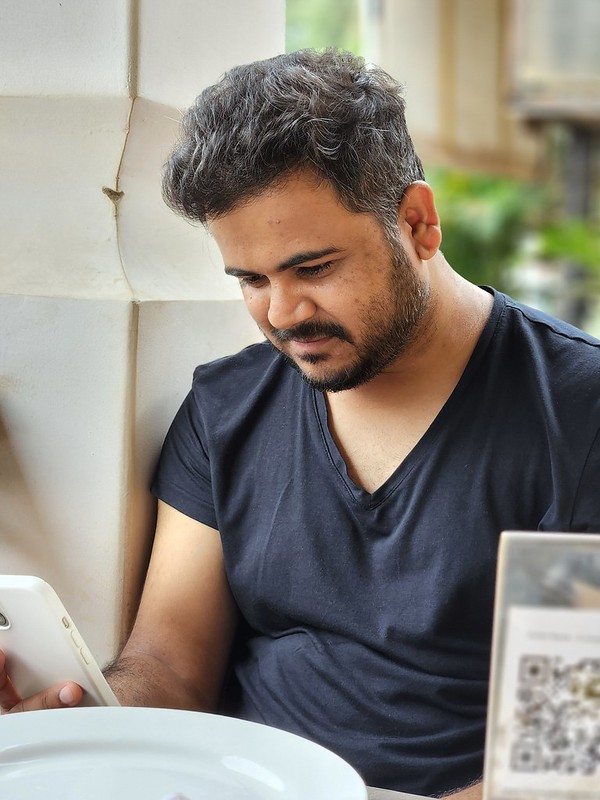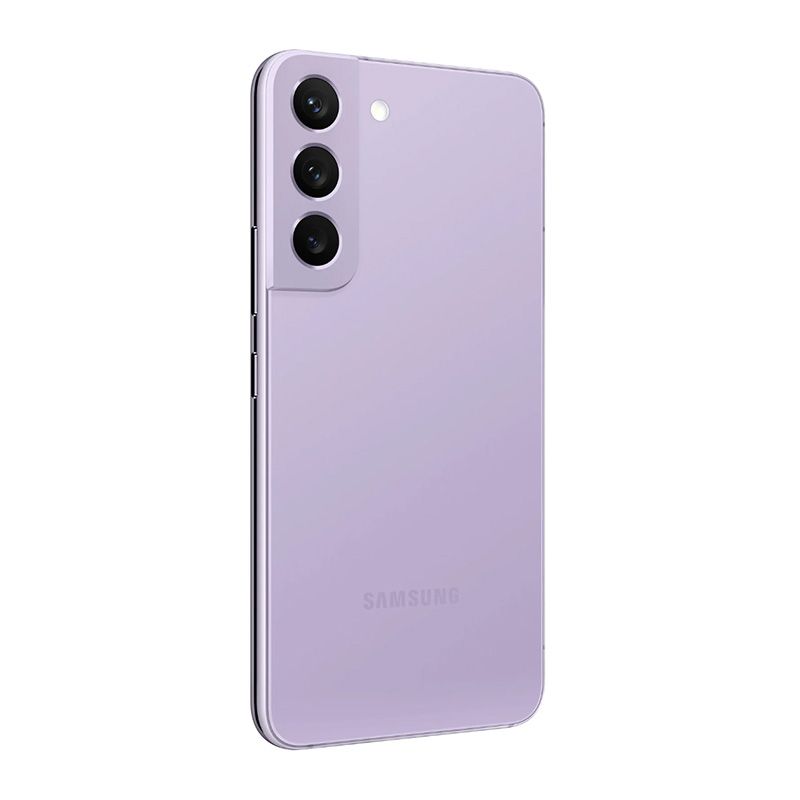If you’re looking for a decent flagship under $1000, the iPhone 14 and Galaxy S22 are two of the best options on the market. Both phones have quite a few things in common. They start at the same price: $799, are relatively small phones and are the cheapest models in their respective lineups. But which one is a better purchase for the average user? We try to find the answer in this iPhone 14 vs Galaxy S22 face-off.
Samsung Galaxy S22 vs Apple iPhone 14: Specifications
| Specification | Samsung Galaxy S22 | Apple iPhone 14 |
|---|---|---|
| Build |
|
|
| Dimensions & Weight |
|
|
| Display |
|
|
| SoC |
|
|
| RAM & Storage |
|
|
| Battery & Charging |
|
|
| Security |
|
|
| Rear Camera(s) |
|
|
| Front Camera(s) | 10MP (F2.2/1.22μm/80˚ FOV) | TrueDepth camera: 12MP, ƒ/1.9 |
| Port(s) |
|
|
| Audio |
|
|
| Connectivity |
|
|
| Software |
|
|
| Other Features |
|
|
Design & Display
The Apple iPhone 14 and Galaxy S22 feature familiar designs. This is especially true for the iPhone 14, which looks indistinguishable from its predecessor except for the new colorways. It has flat sides and a square camera module on the back. The notch is still there, and so is the lightning port at the bottom.

Speaking of the Galaxy S22, it retains the general design of its predecessor, but there are a few changes. For one, the Galaxy S22 swaps the plastic back of the S21 for a glass back. Secondly, it features a color-matched camera island that doesn’t blend into the mid-frame.

The iPhone 14 is slightly taller than the Galaxy S22 and a tad heavier. Both phones are made of high-quality materials, featuring aluminum frames and glass backs. As for durability, the S22 features a Gorilla Glass Victus Plus on the front, while the iPhone 14 has Ceramic Shield protection. Additionally, both devices boast IP68 certification for dust and water resistance. But even then you should definitely pick up a protective case to protect your shiny new phone from drops and scratches.
No matter which phone you pick, you’ll get a wide range of color options. The Galaxy S22 comes in Phantom Black, White, Pink Gold, Green, Graphite, Sky Blue, Violet, Cream, and Bora Purple. Meanwhile, the iPhone 14 is available in Midnight, Purple, Starlight, Blue, and Red.
Both the Galaxy S22 and iPhone 14 have 6.1-inch displays, which are considered small by today’s standards. The Galaxy S22’s AMOLED panel has 1080 x 2340 pixels, a 120Hz refresh rate, and 1300 peak brightness with HDR10+ support. The iPhone 14 panel offers a higher resolution at 1170 x 2532 pixels and provides 1200 nits brightness and Dolby Vision support. Additionally, it supports Apple’s True Tone feature to provide a more readable experience in different lighting conditions.
When it comes to the refresh rate, the iPhone 14 is at a disadvantage as it’s locked to 60Hz. The Galaxy S22, on the other hand, can scale its refresh rate all the way up to 120Hz to provide a smoother scrolling experience and dial it down to 48Hz to conserve battery. The iPhone 14 also doesn’t offer Always-on Display similar to the Galaxy S22.
Let’s not mince words here. The Galaxy S22 has a superior display. Not only does the Galaxy S22 have a more immersive display thanks to a less distracting hole-punch notch, but it is also smoother and brighter than the iPhone 14 panel.
Camera

On the back of the iPhone 14 is a familiar dual-camera setup consisting of a 12MP f/1.5 main shooter and a 12MP f/2.4 ultra-wide camera. The ultra-wide shooter is unchanged from the iPhone 13, but the main camera has been upgraded with a faster upgrade and larger pixel size for improved light sensitivity. There’s also a brand new 12MP f/1.9 selfie camera on the front, which promises big improvements in low light.
The Galaxy S22 packs a triple camera setup, featuring a 50MP f/1.8 main shooter, a 10MP f/2.4 telephoto lens, and a 12MP f/2.2 ultra-wide sensor.
As you can see, the Galaxy S22 has a more versatile camera setup. It boasts a 10MP dedicated telephoto lens that offers 3x optical and up to 30x digital zoom. Meanwhile, the iPhone 14 doesn’t have a zoom lens, but it offers 5x digital zoom from its main camera.
As far as image quality is concerned, both phones are neck to neck. In daylight, both phones’ main cameras deliver sharp images with good detail retention, high dynamic range, and great contrast. However, as you can notice in the samples attached below, the Galaxy S22 favors saturated colors that look pleasing to the eyes, while the iPhone 14 shots showcase true-to-life colors.
For low-light and night photography, both phones offer a dedicated night mode. The iPhone 14 also benefits from Apple’s new image pipeline called Photonic Engine, which the company says delivers 2.5x better mid-to-low light performance on the main camera and up to 2x on the ultra-wide camera.
iPhone 14 camera samples






Galaxy S22 image samples
While there’s no clear winner in still photography, the iPhone 14 takes the lead in the video department. The iPhone lineup has always delivered class-leading video performance, and the iPhone 14 is no different. No matter what format or resolution you choose, you’ll get buttery smooth video footage with rock-solid stabilization. In addition, the new Action mode further strengthens the phone’s video capabilities by offering gimbal-like stabilization. One advantage the Galaxy S22 has over the iPhone 14 is that it can shoot 8K footage while the former tops out at 4K.
Performance, Battery life, and Software
The iPhone 14 packs last year’s A15 Bionic chipset. It’s the first time the standard iPhone doesn’t get the latest and greatest Apple silicone, with the company reserving the new A16 Bionic chipset for the more expensive Pro models. The Galaxy S22’s processing package depends on the market. In Europe, you get Samsung’s in-house Exynos 2200 chipset, while other markets get Qualcomm Snapdragon 8 Gen 1.
Although the iPhone 14 has an older chipset, it blows the Galaxy S22 out of the water in raw performance. In Geekbench, the iPhone 14 scored 1714 on single-core and 4567 on multi-core, while the Galaxy S22 only posted 1,216 and 3,126, respectively.

While the iPhone 14 dominates benchmarks, the Galaxy S22 shines in real-life performance, offering a fast and fluid performance thanks to its 120Hz display. Scrolling and system navigation feel sluggish on the iPhone 14 due to its 60Hz panel. The difference is only noticeable if you’re coming from a 90Hz or 120Hz display. This shouldn’t be an issue if you have never used a high refresh rate display before.
Both phones are available in multiple storage configurations. The Galaxy S22 comes in 128GB and 256GB versions with 8GB of RAM, while the iPhone 14 is available in 128GB, 256GB, and 512GB variants with 6GB of RAM.
The battery life is another area where the iPhone 14 beats the Galaxy S22. The Galaxy S22’s 3,700mAh battery is 300mAh smaller than its predecessor. Samsung thought that the smaller display and more efficient chipset would compensate for the reduced battery in the Galaxy S22, but it hasn’t worked out that way, as the phone struggles to last a full day on heavy usage. The iPhone 14, on the other hand, is more dependable, and you will have no trouble getting through a full workday, even with heavy usage.

When it comes to charging speed and convenience, Samsung’s flagship has the iPhone 14 soundly beat. The Galaxy S22 offers faster 25W wired charging compared to iPhone 14’s 20W charging speed. Both phones also support wireless charging though only the Galaxy S22 offers reverse wireless charging.
The iPhone 14 continues to use the proprietary Lightning port instead of the universal USB-C port that all Android phones, including the Galaxy S22, use. That means you’ll have to carry a separate charging cable for the iPhone while traveling.
On the software front, the iPhone 14 ships with iOS 16 out of the box, while the Galaxy S22 runs Android 12 with One UI 4 on top. If Apple’s excellent track record is any indication, we can expect the iPhone 14 to receive at least 5 years of software updates. The Galaxy S22 isn’t too far, either. It’s promised to get four major Android OS updates and five years of security updates.
iPhone 14 vs Galaxy S22: Which one should you buy?
The iPhone 14 vs Galaxy S22 comparison doesn’t yield a clear winner as both devices have their strengths and weaknesses. The Galaxy S22 boasts a better display, a more versatile camera system, and a better charging experience. Meanwhile, the iPhone 14 offers more raw power, superior video performance, and better software support.
- The iPhone 14 is powered by A15 Bionic chipset and is the first smartphone to offer basic satellite connectivity.
There is no clear answer as to whether you should buy the iPhone 14 or Galaxy S22. Since both phones belong to two completely different ecosystems, let your individual need, priorities, and personal preference decide which phone is better for you. If you’re already deeply invested in the Apple ecosystem, the iPhone 14 might serve you better. On the other hand, if you value customization, openness, and versatility of the Android platform, the Galaxy S22 is one of the best Android flagships you can buy.
- The Galaxy S22 offers a gorgeous 6.1-inch AMOLED display and capable cameras.
The iPhone 14 starts at $799, but you can take advantage of deals to get it for a lot less. If you’re rocking an iPhone 13 or 12, there’s no need to upgrade to iPhone 14, as there aren’t enough improvements and upgrades to be worth the jump. The same goes for the Galaxy S22. It also starts at $799 but can be had for much less with deals. It doesn’t bring many upgrades over its predecessor and is easy to skip if you’re using a Galaxy S21 series device.
The post Apple iPhone 14 vs Samsung Galaxy S22: Which phone should average users buy? appeared first on XDA.
from XDA https://ift.tt/YfA7Nxz
via IFTTT




Aucun commentaire:
Enregistrer un commentaire